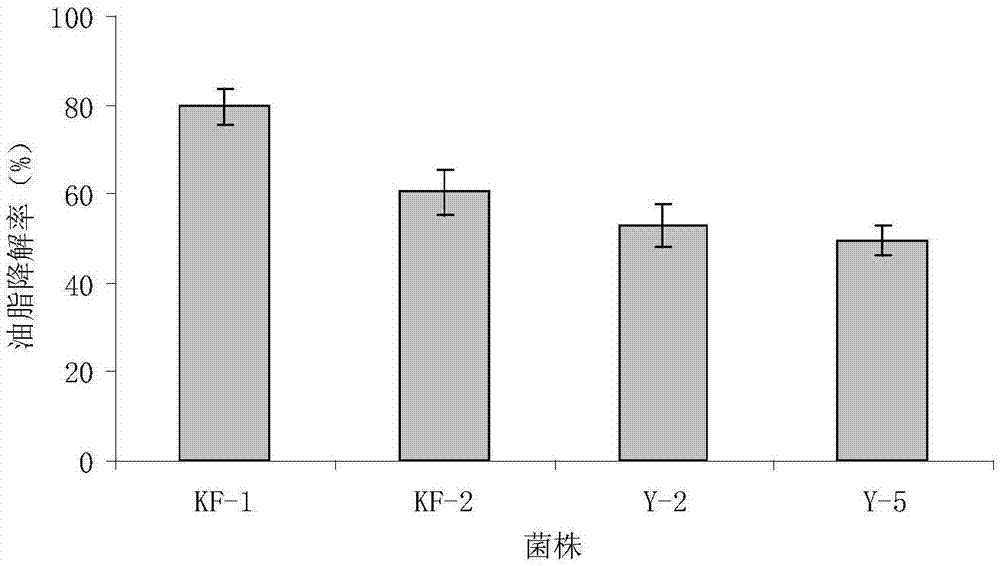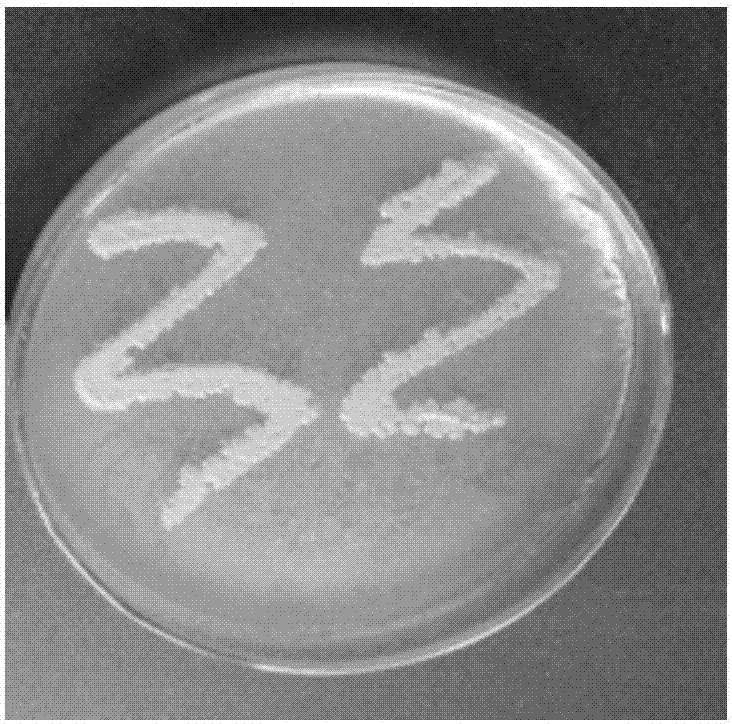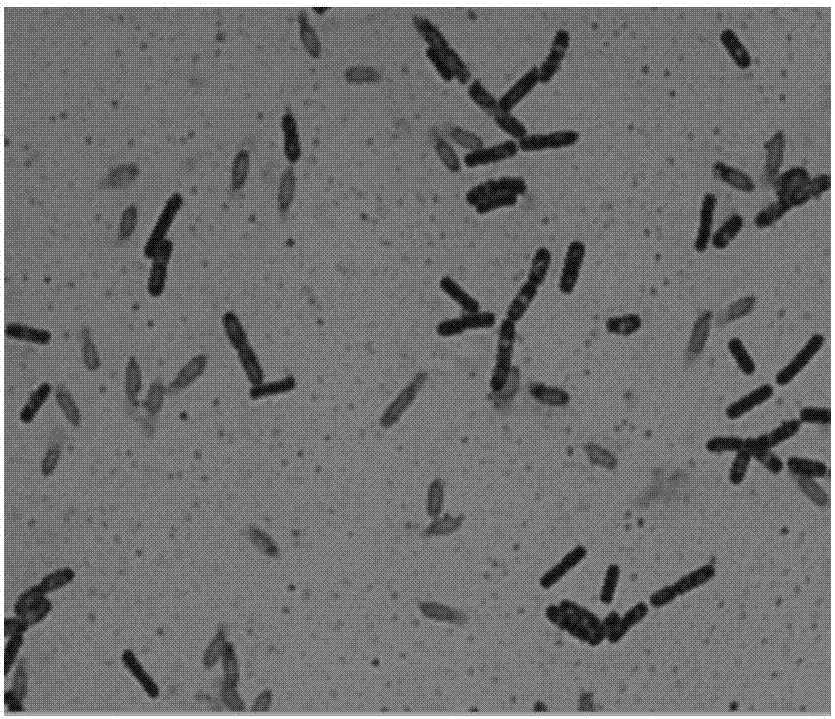Grease degrading bacterium and application thereof
An oil and bacterial agent technology, which is applied to high-efficiency oil-degrading bacteria and the application field of dead livestock and poultry composting, can solve the problems of high oil content affecting the quality of chemical products, adverse effects of composting equipment, etc. Low, accelerated composting effect
- Summary
- Abstract
- Description
- Claims
- Application Information
AI Technical Summary
Problems solved by technology
Method used
Image
Examples
Embodiment 1
[0036] Example 1: Enrichment, domestication and screening of oil-degrading bacteria
[0037] After diluting the soil collected from long-term oil-contaminated areas with sterile water 10 times, take 5mL of the diluted solution and add it to 45mL of the enrichment culture solution, at 30°C, 180r min -1 Shaking culture, every 4d is a cycle, inoculate 10mL of bacterial liquid into 90mL of new culture liquid to promote the growth of the strain, and the acclimatization lasts for 5 cycles. The initial refueling volume increases gradually with the cycle, respectively 0.8, 1.6, 2.4, 3.2, 4.0mL·L -1 .
[0038] Take 1 mL of the last domesticated bacterial solution and dilute it with sterile distilled water, and take 10–4 、10 –5 、10 –6 Three gradient bacterial solutions were applied to a neutral red oil plate, incubated at a constant temperature of 30°C for 3-5 days, and the growth of the colony and whether the surroundings of the colony turned red were observed. If it turns red, it ...
Embodiment 2
[0039] Example 2: Identification of Efficient Oil Degrading Bacteria KF-1
[0040] After morphological and microscopic observation of the bacterial strain KF-1 with the highest degradation rate, the genomic DNA of the bacteria was extracted with a DNA extraction kit, and 16S rDNA universal primer 27F was used for PCR amplification:
[0041] 5'-AGAGTTTGATCCTGGCTCAG-3', 1492R: 5'-GGTTACCTTGTTACGACTT-3'. PCR reaction conditions: pre-denaturation at 95°C for 3 min; denaturation at 94°C for 1 min, annealing at 56°C for 1 min, extension at 72°C for 2 min, and 30 cycles of reaction; final extension at 72°C for 10 min, and termination at 4°C. The PCR product was purified by a recovery kit and then submitted to Shanghai Bioengineering Co., Ltd. to determine its sequence, and then the sequence was submitted to the NCBI database for BLAST analysis.
[0042] After the strain KF-1 was cultured on the neutral red medium for 4 days, the surrounding area of the colony became red obviously ...
Embodiment 3
[0043] Embodiment 3: The degradation ability of KF-1 to different oils and fats
[0044] Inoculate Bacillus subtilis KF-1 with 1% inoculum size in oil degradation medium containing 1% lard, peanut oil, soybean oil, and sesame oil, and cultivate it for 96 hours at 30°C and 180rpm, according to the method described in Example 1. The above method was used to calculate the degradation rate of strains to various oils. The degradation rate of KF-1 to the different oils and fats determined is as follows: Figure 4 shown. The results showed that KF-1 had the ability to degrade various oils, and its degradation effect on lard and peanut oil was significantly better than that of soybean oil and sesame oil.
PUM
 Login to View More
Login to View More Abstract
Description
Claims
Application Information
 Login to View More
Login to View More - R&D
- Intellectual Property
- Life Sciences
- Materials
- Tech Scout
- Unparalleled Data Quality
- Higher Quality Content
- 60% Fewer Hallucinations
Browse by: Latest US Patents, China's latest patents, Technical Efficacy Thesaurus, Application Domain, Technology Topic, Popular Technical Reports.
© 2025 PatSnap. All rights reserved.Legal|Privacy policy|Modern Slavery Act Transparency Statement|Sitemap|About US| Contact US: help@patsnap.com



